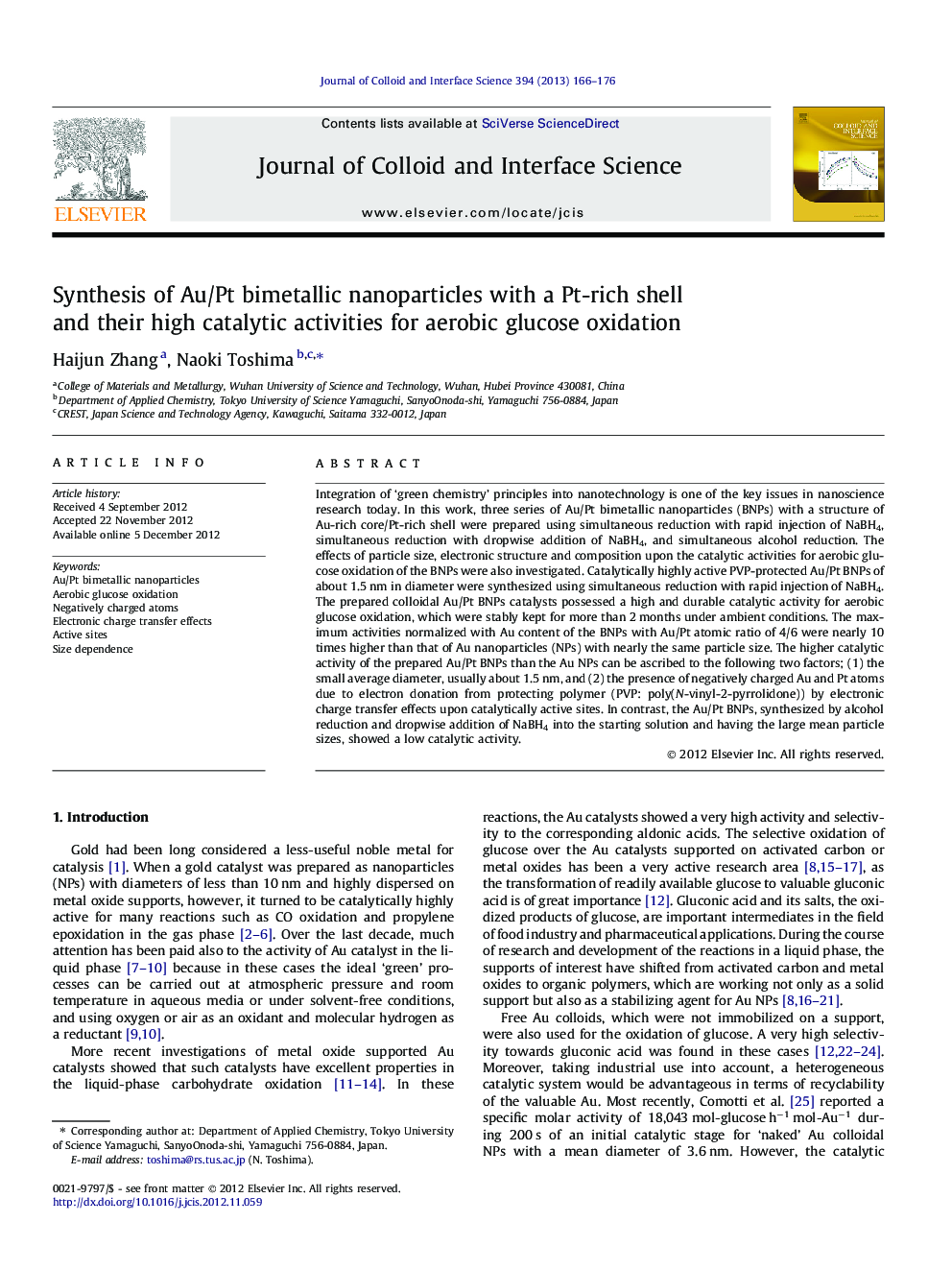| Article ID | Journal | Published Year | Pages | File Type |
|---|---|---|---|---|
| 607758 | Journal of Colloid and Interface Science | 2013 | 11 Pages |
Integration of ‘green chemistry’ principles into nanotechnology is one of the key issues in nanoscience research today. In this work, three series of Au/Pt bimetallic nanoparticles (BNPs) with a structure of Au-rich core/Pt-rich shell were prepared using simultaneous reduction with rapid injection of NaBH4, simultaneous reduction with dropwise addition of NaBH4, and simultaneous alcohol reduction. The effects of particle size, electronic structure and composition upon the catalytic activities for aerobic glucose oxidation of the BNPs were also investigated. Catalytically highly active PVP-protected Au/Pt BNPs of about 1.5 nm in diameter were synthesized using simultaneous reduction with rapid injection of NaBH4. The prepared colloidal Au/Pt BNPs catalysts possessed a high and durable catalytic activity for aerobic glucose oxidation, which were stably kept for more than 2 months under ambient conditions. The maximum activities normalized with Au content of the BNPs with Au/Pt atomic ratio of 4/6 were nearly 10 times higher than that of Au nanoparticles (NPs) with nearly the same particle size. The higher catalytic activity of the prepared Au/Pt BNPs than the Au NPs can be ascribed to the following two factors; (1) the small average diameter, usually about 1.5 nm, and (2) the presence of negatively charged Au and Pt atoms due to electron donation from protecting polymer (PVP: poly(N-vinyl-2-pyrrolidone)) by electronic charge transfer effects upon catalytically active sites. In contrast, the Au/Pt BNPs, synthesized by alcohol reduction and dropwise addition of NaBH4 into the starting solution and having the large mean particle sizes, showed a low catalytic activity.
Graphical abstractFigure optionsDownload full-size imageDownload high-quality image (57 K)Download as PowerPoint slideHighlights► Au/Pt bimetallic nanoparticles with small sizes of about 1.5 nm were prepared. ► The nanoparticles showed very high catalytic activity for aerobic glucose oxidation. ► The activity depended on particle size, electronic structure and composition. ► High instantaneous activity as well as high long-time stability was exhibited. ► The importance of electronic charge transfer effect concept was demonstrated.
